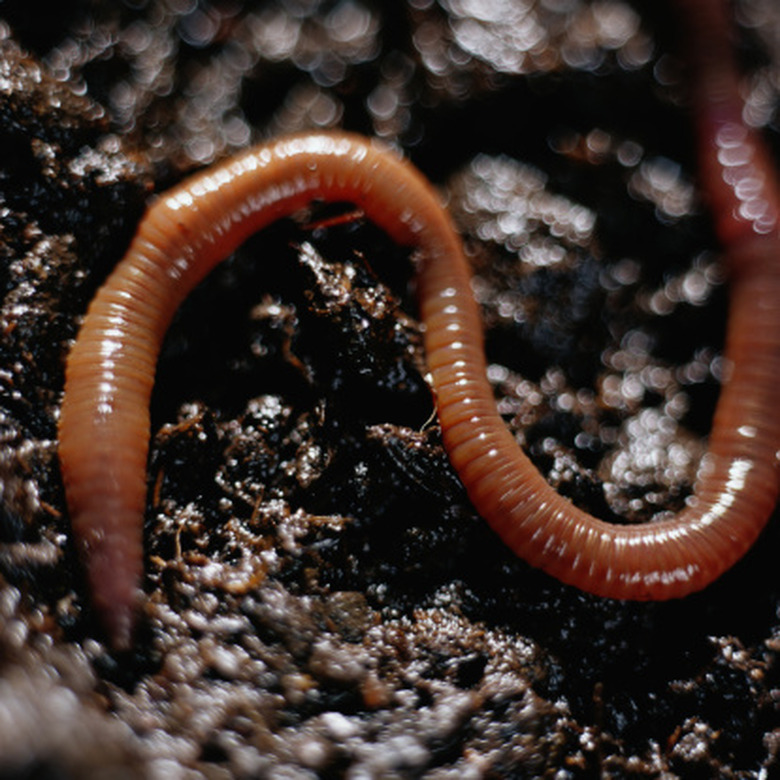Dead Worms On My Patio
The ground is filled with worms, as many as a million worms per acre, according to some estimates. Most people don't realize just how many worms live in the soil, but when something happens to bring them to the surface, it suddenly seems that worms are everywhere. Worms are unable to withstand exposure to light for very long, and if they get caught on the surface with no way to escape, such as when they happen to crawl onto a patio, the worms will die.
Environment
Worms normally live where the light cannot reach them. Some live very near the surface and make long tunnels in mulch, leaf litter and other organic debris, finding both food and shelter in these places. Other worms, especially large, active worms such as night crawlers, dig deep into the earth, sometimes 10 feet or more, and under normal conditions only come to the surface at night to feed. A third type of worm lives at a level that is between the deep-dwelling worms and the surface dwellers. These worms make tunnels that angle down into the ground, deeper than the surface-dwelling worms but nowhere near as deep as the deep-digging worms.
- The ground is filled with worms, as many as a million worms per acre, according to some estimates.
- Other worms, especially large, active worms such as night crawlers, dig deep into the earth, sometimes 10 feet or more, and under normal conditions only come to the surface at night to feed.
Sunlight
Despite the fact that they don't have any eyes, worms are very sensitive to sunlight. A worm that comes out of its tunnel and is exposed to bright light is at immediate risk for dying. Light has a paralyzing effect on worms, and after being exposed to bright light for about an hour, a worm becomes paralyzed and will die. When a worm crawls onto a patio or other hard surface where it cannot tunnel to safety, it is likely to die there, due to the paralysis caused by exposure to light.
Rain
When it rains, worm tunnels often fill up with water. This is beneficial to the environment overall, since it keeps moisture in the ground longer, benefiting plants and slowing down runoff and the process of erosion. The problem for worms is that they cannot live in tunnels filled with water, so rain drives them from their holes to where they may end up being exposed to light and killed. The worms that are unfortunate enough to crawl onto the unyielding surface of a patio, deck, driveway or sidewalk may not be able to find their way to safety and will end up dying there.
- Despite the fact that they don't have any eyes, worms are very sensitive to sunlight.
- When a worm crawls onto a patio or other hard surface where it cannot tunnel to safety, it is likely to die there, due to the paralysis caused by exposure to light.
Chemicals
Pesticides that are used to control grubs and other lawn pests may also end up killing the local worm population. When pesticides such as imidacloprid and carbaryl are applied to the lawn, the worms die along with the pests. Some of the worms will come to the surface to get away from the irritating pesticide but will most likely die soon anyway after reaching the surface. If the worms have found their way onto a patio, that's where they will be found when they die.
